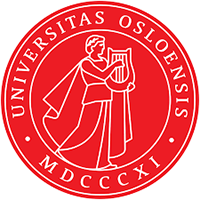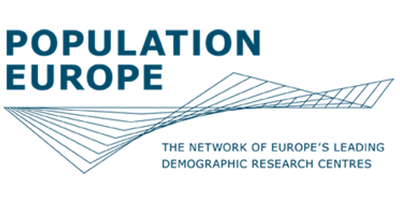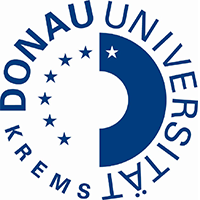QuantMig Migration Scenarios Explorer
Explore, select and download data on QuantMig projections of population in 31 European countries by age, sex, place of birth, educational attainment and labour force participation by migration scenarios of high migration events published in Potancokova et al. (2023).
"Immigration flows" is useful for visualising immigration from different world regions into the EU+ countries projected in the Baseline, Short-high migration events and Persistent-high migration events scenarios. A user guide for this page including information about scenarios is available here.
"Pyramids", "Indicators" and "Maps" visualise the results of the projected scenarios. The user guide for these pages is available here.
When interpreting the results, please remember that any scenarios are inherently uncertain. The scenarios present only a few of the many possible futures, for a small selection of migration flows concerning Europe. The scenarios are intended as planning tools, to illustrate the consequences of different migration assumptions. These assumptions can either describe the continuation of past migration trends, or various high migration events, which approximate some of the underlying uncertainty.
Further features about the methodology can be found in Marois et al. (2023).
How to cite: Potancokova M, Sadler J, Gonzalez-Leonardo M (2023) QuantMig Migration Scenarios Explorer v1.0. Online web tool, available at https://www.quantmig.eu/data_and_estimates/scenarios_explorer/ (data downloaded on [date]).
Frequently Asked Questions (FAQs)
General
| Question | Answer |
|---|---|
| Which data can be found in the QuantMig Migration Scenarios Explorer? | The QuantMig Migration Scenarios Explorer gives access to the migration scenarios assumptions and results for 15 simulated scenarios of future population change in for 31 European countries from 2020 to 2060, as well as derived analytical indicators. |
| How were the QuantMig population projections created? | QuantMig-Mic microsimulation model was used to simultaneously project the population of all 31 countries by 13 socio-demographic characteristics. You can learn more about the model, its modules, parameters and underlying data in Marois et al. (2023). The model code is available in the Zenodo repository. |
| How many scenarios are included in QuantMig Migration Scenarios Explorer? | The QuantMig Migration Scenarios Explorer features 15 scenarios: the Baseline scenario and 14 scenarios of high migration events from different world regions (corresponding to twice-in-a-century frequency of occurrence). |
| How were QuantMig migration scenarios created? | A basic description of the scenarios is printed at the bottom of the page after you have generated a chart or a map. You can learn more about scenario-making process, statistical estimates and implementation of the scenarios into the microsimulation model in Potancokova et al. (2023). |
| What is a high migration event? | In simple words, the term stands for the unexpected large migration. In our modelling, it is an influx of immigrants from a world region during one year (short high migration event) or over a longer period of time (persistent high migration event) which corresponds in its magnitude to the modelled rare migration event with a twice-in-a-century frequency of occurrence (Bijak 2023). |
| What regions of origin are considered in the scenarios? | We model high migration events from seven world regions: Other Europe, North Africa, Sub-Saharan Africa, Latin America, East Asia, South and South-East Asia, and West Asia. The definitions of the regions are identical to those in EU-LFS. Other Europe includes European countries not included in the model and Turkey. |
| Do the migrations scenarios consider migration from Ukraine? | Yes, all scenarios share identical migration assumptions for 2020-2025 and we account for the migration from Ukraine in 2022 and assume that the war will end by 2025. We assume that 40% will return migration back to Ukraine. For more details see Marois et al. (2023). |
| Where can I download data for all QuantMig scenarios? | You can download the dataset for all 29 QuantMig scenarios from the Zenodo repository. This includes the 15 high migration event scenarios with twice-in-a-century frequency of occurrence featured in the QuantMig Migration Scenarios Explorer, plus 14 migration events scenarios of once-in-a-decade frequency. |
| Why are some scenarios not included in the QuantMig Migration Scenarios Explorer? | We have only included high migration event scenarios with twice-in-a-century frequency of occurrence. This is because the migration events of once-in-a-decade frequency were used for the sensitivity analysis and do not show very different results to the scenarios available in the tool. The analysis of all scenarios is available in Potancokova et al. (2023). |
| What were the data sources for the QuantMig migration scenarios? | The baseline population was created using the data from the 2011 censuses, the European Labour Force Survey (EU-LFS 2014-2019) and the European Social Survey (waves 2014-2019). Migration assumptions on migration between EU+ countries and assumptions on immigration to the EU+ countries in the Baseline scenario use median estimates of origin-destination flows by Aristotelous et al. (2022). High migration events scenarios use estimates of rare migration events by Bijak (2023). More details on the data can be found in Marois et al. (2023). |
| How reliable is the provided data? | Our scenarios are not predictions. The projection follows what-if scenarios to show the development over time if certain criteria are met. The Baseline scenario assumes continuation of the past demographic, migration and labour force trends. You can read more about the scenario assumptions in Marois et al. (2023). |
| Is there a registration required for downloading content from the web site? | No registration is required for accessing, selecting, and downloading data. |
| Can I download the data and use it for my own purposes? | You can download data from your selection using the "Download CSV" button below the generated chart or map. It is not possible to download the whole data set from this webpage but you can download data for all scenarios from the Zenodo repository. |
| How should I cite data from the website? | Potancokova, M., Sadler, J., Gonzalez-Leonardo, M. (2023) QuantMig Migration Scenarios Explorer v1.0. Online web tool, available at https://www.quantmig.eu/data_and_estimates/scenarios_explorer/. |
| Which browsers are recommended to use QuantMig Scenarios Explorer? | To get the best user experience we recommend to use Google Chrome, Microsoft Edge or Mozilla Firefox browsers. |
| Can I download the whole dataset at once? | You can download data from your selection using the "Download CSV" button below the generated chart or map. It is not possible to download the whole data set from this webpage but you can download data for all scenarios from the Zenodo repository. |
Data and classification
| Question | Answer |
|---|---|
| What countries are included in the QuantMig Migration Scenarios Explorer? | 31 EU+ countries include: Austria, Belgium, Bulgaria, Croatia, Czechia, Cyprus, Denmark, Estonia, Finland, France, Germany, Greece, Hungary, Iceland, Ireland, Italy, Latvia, Lithuania, Luxembourg, Malta, Netherlands, Norway, Poland, Portugal, Romania, Slovakia, Slovenia, Spain, Sweden, Switzerland, United Kingdom. |
| What regional aggregates are available in the QuantMig Migration Scenarios Explorer? | The immigration flows, population pyramids and the indicators are available for the EU-27 (from 2020 onwards), for a total of all 31 simulated countries (EU+) and for the UK+EFTA countries (United Kingdom, Iceland, Norway and Switzerland. Liechtenstein is excluded because we only model countries with population of at least 300 thousand inhabitants). |
| What is the definition of the native-born population, foreign-born population, born in EU+ and individuals born outside the EU+? | The native-born population are individuals who were born in their country of residence, while the foreign-born are those who were born outside their country of residence. Populations born in EU+ include persons who were born in other EU+ country than the country of their residence. Finally, the category individuals born outside EU+ corresponds to the foreign-born population excluding those who were born in any of the above-mentioned 31 EU+ countries. |
| What age categories are available? | The simulation results are extracted for age groups 0-4 to 95+ (the maximum age group considered). |
| Are projections available by single age categories? | No, the model results are only available for 5-year age groups because the underlying data such as the EU-LFS is only representative for 5-year age groups. |
| What education categories are available? | The educational attainment categories used in the projections are in line with selected UNESCO's International Standard Classification of Education (ISCED 2011) categories. The "Below Secondary" category includes persons with no formal education and with primary (ISCED 1) and lower secondary (ISCED 2) education. The "Secondary" category includes persons with completed upper secondary education (ISCED3). The "Post-secondary" category persons with non-university diploma or degree beyond secondary level (ISCED 4 and 5) and those with a university degrees (ISCED 6, 7 and 8). |
| What is labour status? | Labour status indicates if the person is active in the labour force (Active) of not (Inactive). The definition of the active in the labour follows the International Labor Organisation definition used in the EU-LFS and includes employed and unemployed persons. |
| Are annual projection data available? | No, the model results are only available for 5-year periods. This is because the underlying data such as EU-LFS is only representative for 5-year age groups. |
| Are projections available by single age categories? | This is because we first pre-simulate using population stocks from the 2011 census and use QuantMig migration median flow estimates by Aristotelous et al. (2022,) which account for the differences in definition of a migrant, coverage and underreporting of migration, instead of the migration data reported by the Eurostat. Because the migration flows (and the resulting net migration) differ from Eurostat, the 2020 population stock estimates differe as well. |
| How were the indicators calculated? | Definition of the indicator will be displayed below the chart or a map after you generated it. |
| Why do population stocks for 2020 differ to those available from the Eurostat or national statistical offices? | This is because we first pre-simulate using population stocks from the 2011 census and use QuantMig migration median flow estimates by Aristotelous et al. (2022,) which account for the differences in definition of a migrant, coverage and underreporting of migration, instead of the migration data reported by the Eurostat. Because the migration flows (and teh resulting net migration) differers to Eurostat, the 2020 population stock estimates differe as well. |
| Why are results for countries with smaller populations volatile? | Yes, this is due to the Monte Carlo random process in the simulation. |
Use and functionalities of the tool
| Question | Answer |
|---|---|
| How do I select data for a country? | Use drop-down menus. If you need assistance, the steps you need to generate a chart are explained in the User guide here and here. |
| Can I select data for multiple countries? | No, this is not possible, you can only display data for one country in a chart. You can, however, generate two charts for two different countries and compare them. |
| How were the indicators calculated? | Definition of the indicator will be displayed below the chart or a map after you generated it. |
| I have a question that is not in the FAQs. | If you have further questions, please send an email to potancok@iiasa.ac.at |
This work has received funding from the European Union's Horizon 2020 research and innovation programme under grant agreement No. 870299 QuantMig: Quantifying Migration Scenarios for Better Policy. This document reflects the authors'view and the Research Executive Agency of the European Commission are not responsible for any use that may be made of the information it contains.









